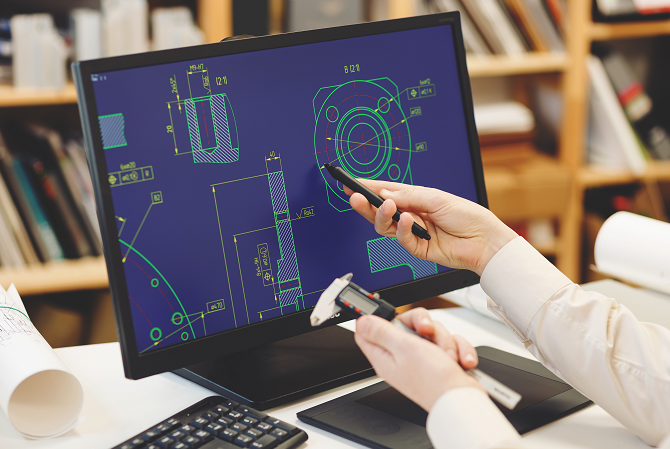Computer-Aided Design: What Is It And Why Should It Matter To Businesses?
Technology has revolutionized the business world. In this digital era, there are lots of innovative techs to help designers and engineers in the technical space to achieve the performance efficiency that allows them to stay competitive. One such technology is computer-aided design.

Benefits Of CAD To Businesses
Computer-aided design (CAD) is a valuable technology for designing and technical documentation. This technology with an automated process is a more efficient alternative to manual drafting, allowing designers to digitally create 3D models and 2D drawings of real-world products in the manufacturing and construction domain.
Today, the market is dominated by 3D CAD designs and is expected to achieve a global value of USD$9.95 billion by the end of 2021.
Check out these benefits of CAD to businesses:
1. Ensure Efficient Design Process
CAD allows designers and engineers experience a streamlined design process. Before CAD, designers were forced to manually draw everything, which can take hours to days to complete. However, with CAD, creating simple parts and shapes takes a few seconds. And the biggest win is that it simplifies even the most complex parts so designers don’t have to contemplate how to correctly draw them in 2D.
They’re able to easily visualize the final product that’s being created and all small constituent parts involved. Also, animation can be added so designers and projects managers can have an idea of how the project will work in the real world. It can be seen interacting and moving with the rest of the elements it’s meant to be paired with.
Furthermore, CAD software also allows third-party extensions which are special add-on tools and features that can further improve the designing process and workflow. For instance, these SketchUp Pro extensions can help solve your 3D modeling problems.
In addition, making changes in projects is easy as well as creating new models based on existing ones. With CAD, you can reuse 3D models and add the necessary features in order to create a similar, yet unique project for less time.
2. Support For 3D Printing
This is perhaps the best use of 3D CAD software in businesses. 3D printing has transformed the way prototypes are created and built. Today, 3D printing is often used to create final versions of products as well as buildings before manufacturing or groundbreaking.
And this can’t be done without 3D generation on CAD software. 3D CAD design helps in simplifying product data management and allows the automated inspection systems to read dimensions exactly from the digital model, which eliminates human error. The exported files contain all data necessary to print a physical prototype, complete with diverse colors and minute detailing.
3. Enhance Productivity
The streamlined design process helps in saving time and effort, which directly translates to increased productivity of your team. Since it allows engineers and designers to work smarter and faster, CAD results in quicker project completion. It saves them a lot of work that can be put to good use on different projects or in perfecting the design for ongoing projects.
This allows businesses to produce high-quality, low-cost projects and push projects out faster and make any instant changes as necessary. The improved productivity brings businesses a competitive edge in the global marketplace.
4. Streamline Communication And Collaboration
When designing with CAD software, designers and engineers can communicate more clearly and efficiently with supervisors, project managers, and anyone they work with. With detailed drawings made in a standard format, it requires only a simple explanation of minute details and purpose which simplifies the whole presentation process.
In addition, CAD software also provides the ability to share your product designs with project managers or co-designers anytime, anywhere, thanks to cloud technology. This is great for a remote workforce or if your business has international clients who want to see project design prototypes and give feedback in real-time.
5. Easy Documentation
Documentation is an important step in the designing process. When you have project documentation, you have both simple explanations and justifications for design decisions. CAD programs ensure the easy generation of documentations. As a designer works with CAD, every step of the designing process will be automatically documented, allowing everyone to analyze and synthesize the process.
In addition, documents will often include dimensions and geometries of the project, material specifications and bill of materials for the components, subassemblies and their components, and more. With CAD software, it’s easier to track and understand every change made to the project.
Conclusion
CAD is a life-saver for those in the designing industry. With this valuable technology, businesses can bolster productivity, complete more projects on time and achieve a competitive edge.




